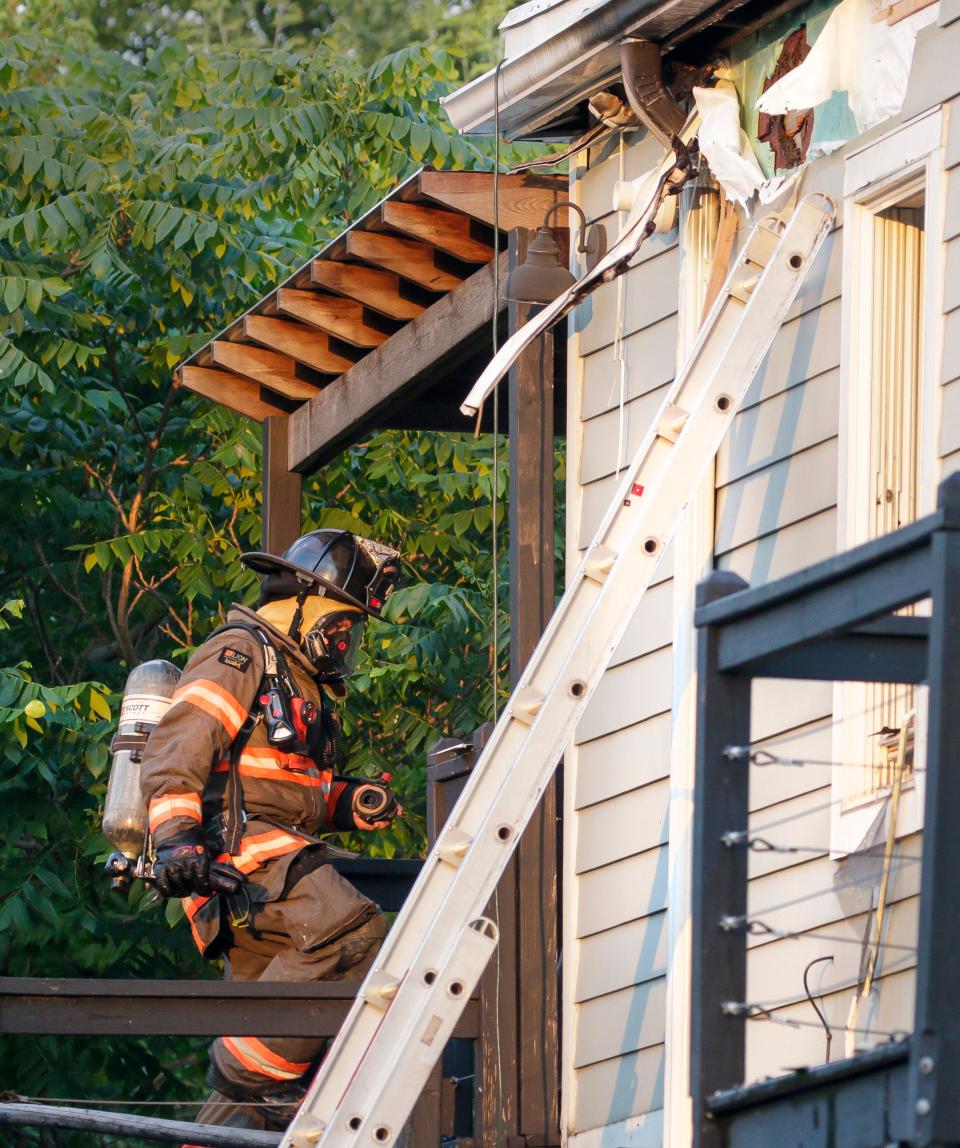6 things to know about home fire prevention and safety in Sheboygan

SHEBOYGAN – What are common causes of building fires? Are property fires increasing? What do residents do after a devastating fire?
The Sheboygan Press asked the Sheboygan Fire Department these questions following a rash of structure fires this summer and more than 30 reported structure fires since the beginning of the year.
What were the causes of building fires this summer?
Nic Noster, division chief of prevention and inspection, said it can be difficult to definitively identify a fire’s source, especially when there’s a lot of damage. The department can “rule out” some items but would need to bring an investigation to court for further identification.
From available information, improper disposal of smoking materials, natural gas and an electric dryer could be sole or partial causes of building fires this summer.

Are structure fires in Sheboygan increasing?
Structure fires have “stayed fairly consistent” over the past few years, according to Noster.
The fire department responded to 57 structure fires in 2022 and 44 structure fires in 2021, according to Noster and based on reporting requirements from the U.S. Fire Administration.
He added not every one of those structure fires is a building emitting fire and smoke.
What are common causes of structure fires?
Cooking, heating and smoking materials are the leading causes of home fires in Sheboygan, Noster said. Local data are similar to the national reporting from the National Fire Protection Association.
He added that lithium batteries can also be a potential source, but they don’t cause as many fires as others.
Business park changes: What's happening with the SouthPointe Enterprise Campus? Here are 4 updates.
How can people prevent home fires?
The NFPA recommends several safety measures:
Electrical: Don’t plug major appliances, like refrigerators and dryers, into extension cords. Make sure electrical cords don’t cross doorways or sit under carpets. Only plug one heat-producing appliance, like a coffee maker and toaster, into one receptacle outlet.
Candles: Blow out candles when leaving a room or going to sleep. Keep them at least 1 foot away from flammable items, and don’t let them burn down close to the container.
Smoking: Smoke outside. Don’t discard cigarettes in vegetation, like dried leaves or potted plants, as it's susceptible to igniting. Make sure cigarettes are completely out, using water or sand if necessary. Don’t leave e-cigarettes unattended, as fires have occurred while being used, charged or transported.
Heating: Keep anything that can burn at least 3 feet from heating equipment. This can include furnaces, fireplaces and space heaters. Don’t leave space heaters on when leaving or going to sleep. Ensure a fireplace has a screen to prevent sparks flying out.
Smoke alarms: Test smoke alarms at least once a month. Make sure they’re on the ceiling or a high wall, away from the kitchen to reduce false alarms.
What do people do in a fire’s aftermath?
Fires can endanger health and safety and result in thousands of dollars in damages.
Noster said a minor fire can lead to large smoke that will need thorough cleaning. Water damage could also result from the department delivering about 150 gallons of water a minute to extinguish a fire. An “overhaul” to make sure a fire didn’t spread and can't reignite could call for removing drywall, plaster and cabinets.
According to the 2022 department report, fires led to more than $2 million in combined losses for property, belongings and home values.
“Even a minor fire can produce enough heat to melt wiring and plumbing piping,” Noster said. “Even a minor fire can displace residents for months for cleaning and rebuilding. Even a minor fire will damage furniture, clothing, home goods, and ruin food and medications.”
A Sept. 6 building fire on South 12th Street resulted in about $10,000 damages, and a Sept. 5 fire on Union Avenue resulted in about $35,000 in damages.
The fire department works with insurance companies and their fire investigators to determine a fire’s source. However, if a fire is not believed to be criminally motivated, Noster said, tampering with a fire scene could lead to legal issues with the insurance companies.
Noster said Sheboygan FD sees renters and homeowners without insurance, which could leave them without assistance in the clean-up and recovery processes. He added property owners typically don’t have insurance coverage for renters.
The fire department can connect residents with the American Red Cross if they need somewhere to stay and a restoration company to address water damage and secure the property.
Kohler family properties: Two of Herbert V. Kohler Jr.'s children inherit family properties in Sheboygan, Kohler
How can the community support displaced residents?
Residents may also seek community support to help with associated costs.
Stephanie Bruss started a GoFundMe page for her brother, Alan Vodicka, who was impacted by a structure fire. The building housing his massage and therapy practice, among other tenants, was displaced after a June 30 fire destroyed the building.
It resulted in about $175,000 damages, according to early estimates from the fire department.
Find the GoFundMe page here.
Contact Alex Garner at 224-374-2332 or agarner@gannett.com. Follow her on Twitter at @alexx_garner.
This article originally appeared on Sheboygan Press: 6 things to know about fire safety and prevention in Sheboygan

